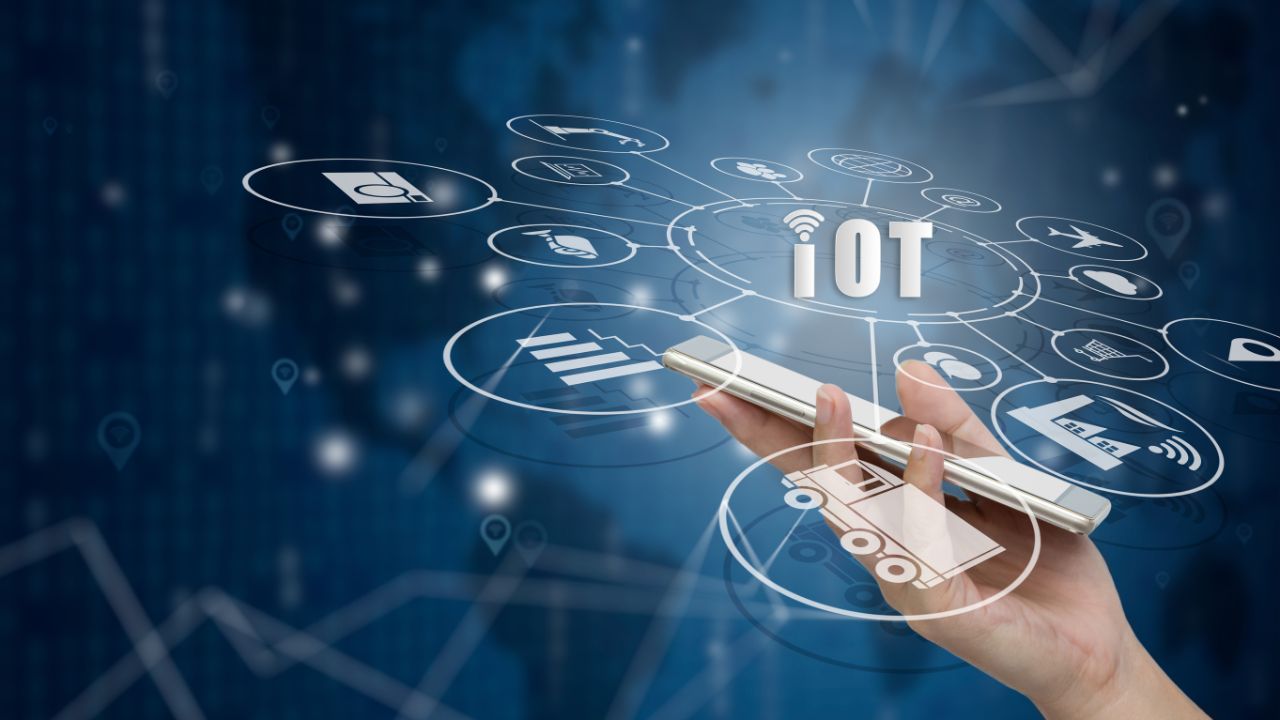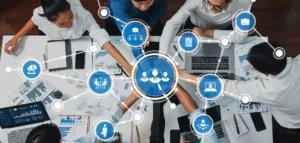The Internet of Things (IoT) is rapidly becoming one of the most transformative technological innovations of the modern age. It connects devices, systems, and objects, allowing them to communicate, exchange data, and make decisions autonomously. From smart homes to healthcare, agriculture, and transportation, IoT is reshaping the way we interact with the world around us. In this article, we’ll explore what IoT is, how it works, its applications across industries, its benefits and challenges, and its exciting future.
The Rise of the Internet of Things (IoT)
The concept of the Internet of Things (IoT) may seem futuristic, but it is already part of our daily lives. IoT refers to the network of physical devices, vehicles, appliances, and other objects embedded with sensors and software, enabling them to collect and exchange data over the internet. The idea of connected devices dates back several decades, but it wasn’t until the proliferation of smartphones and internet connectivity that IoT truly began to take off. The rise of affordable sensors, cloud computing, and wireless communication has made IoT more accessible to a broad range of industries and consumers.
Today, IoT is everywhere—from smart thermostats that adjust your home’s temperature to smartwatches that monitor your health. As the number of connected devices continues to grow, estimates suggest there will be over 75 billion IoT devices by 2025. This widespread adoption of IoT has created new possibilities for innovation in various sectors. With the continued expansion of high-speed internet and 5G technology, the potential for IoT will only continue to grow.
How the Internet of Things (IoT) Works
At its core, IoT relies on connecting devices to the internet, allowing them to communicate with each other and send/receive data. Each IoT device is equipped with sensors that gather information about its environment or its own state. This data is then transmitted to a cloud platform or edge computing system for analysis. The analysis of this data enables devices to make intelligent decisions or trigger actions without human intervention.
For instance, a smart thermostat may collect data about the room’s temperature and humidity. It then compares this data to your preferred settings and automatically adjusts the temperature to keep you comfortable. The communication between devices typically happens through various wireless protocols, including Wi-Fi, Bluetooth, Zigbee, and cellular networks like 5G.
Cloud computing plays a critical role in IoT by providing a scalable platform to store and process the massive amounts of data generated by connected devices. In some cases, edge computing is used, which processes data closer to the device, reducing latency and enabling real-time decision-making. Whether through cloud-based services or local processing, the speed and efficiency of data handling are crucial to the success of IoT applications.
IoT Applications Across Various Industries
Smart Homes
One of the most popular applications of IoT is in the realm of smart homes. With the help of IoT devices, homeowners can automate everyday tasks, such as controlling the lights, thermostat, security cameras, and even kitchen appliances remotely. Smart thermostats like Nest, for example, learn the user’s preferences over time and adjust the temperature automatically, ensuring energy efficiency without sacrificing comfort. Home security systems are also enhanced by IoT, offering features such as remote monitoring, automatic door locks, and motion sensors that send real-time alerts to homeowners.
Healthcare
The healthcare industry has been greatly impacted by the integration of IoT. Wearable devices like fitness trackers and smartwatches help individuals track their physical activity, sleep patterns, and heart rate. These devices not only assist with personal health management but also collect data that can be shared with healthcare providers for remote monitoring. Telemedicine and IoT-enabled medical devices are improving patient care, enabling doctors to monitor chronic conditions or vital signs remotely. In emergency situations, IoT devices can alert healthcare professionals about critical conditions, allowing for faster intervention.
Manufacturing
In manufacturing, the adoption of IoT is a key aspect of Industry 4.0. IoT sensors monitor equipment health, track inventory, and predict maintenance needs before equipment fails. For example, predictive maintenance algorithms can analyze sensor data from machinery to determine when a part is likely to fail and notify operators to perform repairs before downtime occurs. This increases operational efficiency and reduces costs associated with unscheduled maintenance. Additionally, IoT devices help improve supply chain management by providing real-time data about inventory levels, shipping status, and production processes.
Agriculture
IoT is also revolutionizing the agriculture sector. Precision farming, enabled by IoT, allows farmers to monitor soil moisture levels, temperature, and crop health using sensors placed throughout their fields. This real-time data helps farmers make informed decisions on irrigation, fertilization, and pest control, optimizing the use of resources while improving crop yields. Similarly, IoT-powered livestock monitoring systems track the health, location, and behavior of animals, ensuring they remain healthy and reducing the need for physical checks.
Transportation
IoT is transforming the transportation sector, from autonomous vehicles to smart traffic systems. In the case of self-driving cars, IoT sensors help vehicles navigate, detect obstacles, and communicate with other vehicles to avoid accidents. Smart traffic lights and vehicle tracking systems use real-time data to optimize traffic flow, reduce congestion, and decrease fuel consumption. Furthermore, fleet management companies use IoT to monitor the condition of vehicles, optimize routes, and ensure timely deliveries.
Benefits of the Internet of Things (IoT)
The implementation of IoT brings numerous benefits across various sectors. First and foremost, IoT enhances efficiency by automating routine tasks and processes. Devices can make real-time decisions based on data, freeing up human resources for more complex tasks. For businesses, this translates to improved operational performance and cost savings. IoT helps reduce energy consumption through smart lighting, heating, and cooling systems, benefiting both businesses and homeowners alike.
Another significant benefit is the ability to make data-driven decisions. By collecting and analyzing vast amounts of data from connected devices, organizations can gain insights into their operations, identify areas for improvement, and optimize processes. For example, predictive maintenance can help businesses avoid costly breakdowns, while consumer data allows businesses to personalize their products and services to meet customer needs.
Challenges and Security Concerns in IoT
While the benefits of IoT are significant, it also comes with several challenges, particularly concerning security and privacy. As more devices become connected, the risk of cyberattacks grows. IoT devices are often vulnerable to hacking, as many of them lack adequate security measures. For instance, weak passwords, outdated software, and unencrypted data transmission can leave IoT devices susceptible to exploitation.
Another major concern is the vast amount of personal data that IoT devices collect. From health-related data from wearables to usage patterns from smart home devices, this data can be used to track individuals’ behaviors. Without proper safeguards, this information can be accessed by unauthorized parties, leading to privacy breaches. As IoT adoption grows, manufacturers and service providers must prioritize security to ensure the safety of users’ data.
The Future of IoT: What’s Next?
The future of IoT looks incredibly promising. With the advent of 5G technology, IoT will experience significant advancements in speed and connectivity. The low latency and high bandwidth of 5G networks will enable real-time communication between devices, making IoT applications faster and more reliable. As a result, we can expect a broader adoption of IoT-powered technologies like autonomous vehicles, smart cities, and advanced robotics.
Furthermore, artificial intelligence (AI) and machine learning are expected to play a central role in the evolution of IoT. These technologies will enable devices to not only collect and transmit data but also learn from it and improve their decision-making capabilities. Additionally, the rise of edge computing will allow more data to be processed closer to the source, reducing dependence on cloud infrastructure and speeding up data analysis.
Frequently Asked Questions (FAQs)
What is the Internet of Things (IoT)?
The Internet of Things (IoT) refers to the network of physical devices that are embedded with sensors, software, and other technologies to connect and exchange data with each other over the internet.
How does IoT impact my daily life?
IoT devices make everyday tasks easier, such as controlling home appliances remotely, monitoring health data from wearables, or improving transportation efficiency through smart systems.
What are the security risks of IoT devices?
IoT devices are vulnerable to cyberattacks, data breaches, and privacy concerns if not properly secured. Weak security protocols, outdated software, and unsecured data transmission can leave IoT devices exposed to exploitation.
What industries benefit the most from IoT?
IoT benefits industries like healthcare, manufacturing, agriculture, transportation, and smart homes by improving efficiency, reducing costs, and enabling real-time decision-making.
How does IoT work with Artificial Intelligence (AI)?
AI can enhance IoT by enabling devices to learn from the data they collect, making smarter decisions and automating tasks based on patterns and trends observed in the data.







